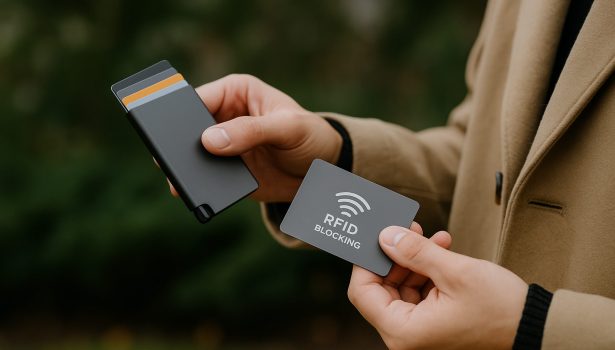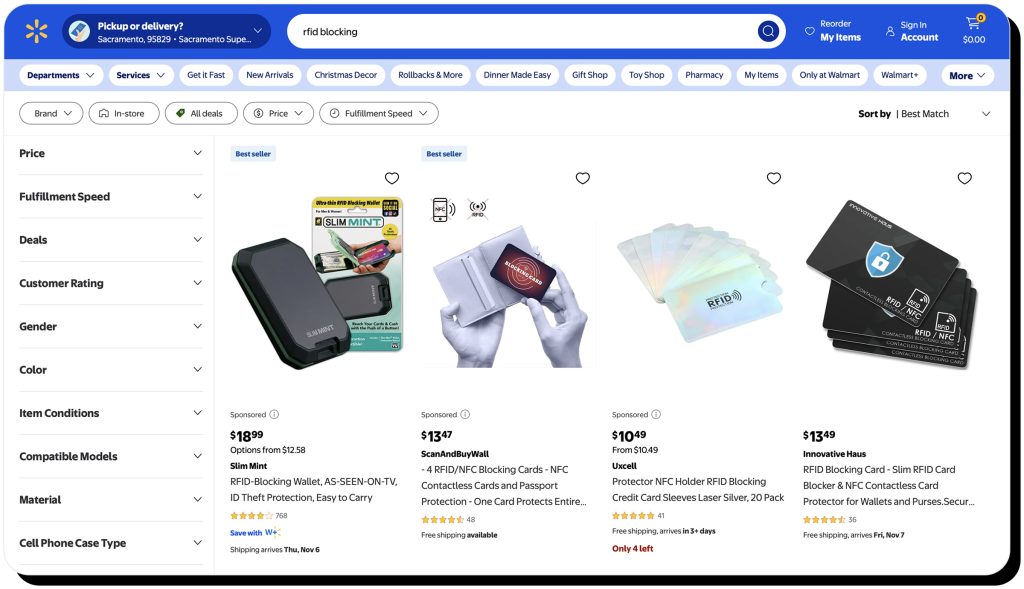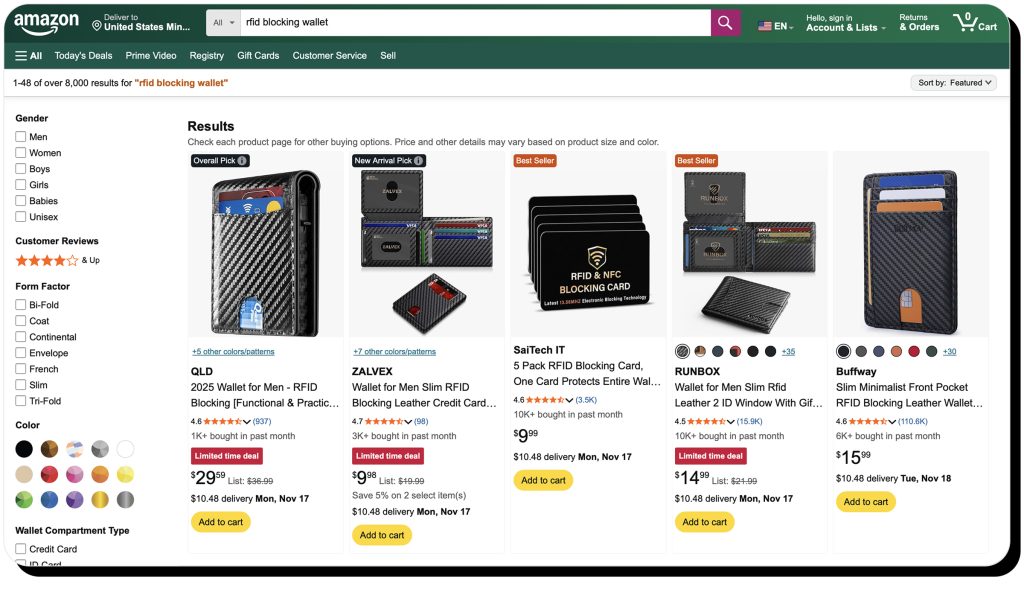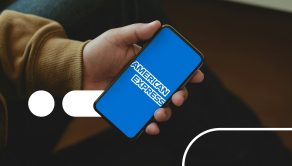What is RFID blocking? How it works and whether you need it in 2025

RFID blocking is the practice of surrounding an RFID chip with a barrier that prevents electromagnetic signals from reaching it. People use these barriers in wallets, purses, and passport cases to prevent scammers with RFID readers from stealing their data.
However, RFID blocking isn’t strictly necessary for most people in 2025 because modern contactless cards and passports use advanced security features like EMV encryption and dynamic one-time codes that make skimming nearly impossible to exploit. Even if a thief could read limited data, it wouldn’t include sensitive details like your CVV, PIN, or name, and couldn’t be used to clone your card for payments.
What is RFID?
RFID, short for Radio Frequency Identification, is a wireless communication system that utilizes electromagnetic fields to identify and track objects. Specifically, it uses radio waves, the type of radiation with the longest wavelengths and lowest frequencies.
An RFID system is made up of a tag and a reader. The reader emits an electromagnetic pulse that triggers any tags nearby. The tags, which each have an integrated circuit (IC) and an antenna for picking up the signal, then send data back to the reader.
RFID tags can be “active” or “passive.” Here’s what that means:
- Passive tags get energy for their IC via inductive coupling from the reader. Essentially, the reader’s signal creates an electromagnetic field, which the tag’s antenna receives and turns into electrical power. Using this power, the IC sends stored data back to the reader. These are widely used in contactless payment cards, ePassports and transit passes.
- Active tags have a battery alongside the antenna and the IC that lets them constantly send out their own signal to RFID readers nearby. This enables the system to function at a much longer range. These are typically used in industrial and tracking environments.
You might have heard that contactless payment systems use something called NFC. This stands for “near-field communication,” and it’s a subset of RFID. It works at ranges of just a few inches, making it difficult for bad actors to intercept. (They’d have to get uncomfortably close to you, especially with a wallet or bag in the way.)
Use cases of RFID in 2025
RFID technology is widely employed in industry and in personal gadgets. In industry, it’s used to track things throughout warehouses, supply chains, and production lines. For personal use, it’s in a variety of items, including:
- contactless payment cards
- transit passes
- passports
- key fobs
- pet microchips
Besides RFID, there are other ways to capture unique IDs, such as barcode and QR code scanning. However, the advantage of RFID is that it works even when objects are in the way. That is to say, most objects—as long as they’re not of the RFID safe type.

What is RFID protection?
RFID protection, also called RFID blocking, involves surrounding an RFID chip with a material that prevents radio waves from getting to it. The material will be something conductive—generally a metal foil or a fabric with metal or carbon fibers woven in. Some examples:
- aluminum foil
- stainless steel
- carbon fiber
- nickel-copper fabrics
Why do conductive materials like the ones listed above block RFID? Let’s break it down.
First, it’s important to note what you’re actually blocking: electromagnetic radiation in the form of radio waves. You’re trying to keep this signal from reaching the chip.
Conductive materials create something called a Faraday cage (named after British chemist and physicist Michael Faraday). When radiation hits the “cage,” it gets scattered throughout the conductive material and never reaches the space inside.
RFID-blocking products can be wallets, sleeves, bags, backpacks, or passport covers, but they all essentially function as Faraday cages.
RFID blocking wallet: how does it work?
A metallic or conductive lining that forms a small Faraday cage is what makes a wallet RFID blocking. This lining can be quite thin, as long as it properly absorbs and deflects radio waves.
When someone tries to scan your wallet with an RFID or NFC reader, the wallet’s conductive layer absorbs or deflects the electromagnetic field, preventing the signal from activating the chips in your cards. As a result, your card data can’t be read or transmitted wirelessly, protecting you from potential digital pickpocketing.

How to test if an RFID blocker works
It’s a good idea to test your blocker before relying on it day-to-day, since there are plenty of fake “RFID-blocking” products being sold online. Some of these are merely decorative, while others are functional but only block certain frequencies.
Checking if your RFID blocking product is pretty simple and can be done with a credit/ debit card. All you need to do is to try making a contactless payment or scanning your card without taking it out of the sleeve. If the reader doesn’t detect it, then it works.
Another option is to get a professional-grade RFID testing device or a certification. Although these are more reliable than a simple card scan test, they’re not really necessary for everyday use and might be overkill for an average person.
You can also create your own RFID scanner using an RFID reader module, some wiring, and something called an Arduino board. However, unless you enjoy the challenge of assembling electronics, this is definitely overkill.
Is RFID blocking necessary today?
This is a $5 – $250 question, depending on how high-end a wallet you’re considering.
The good news is that modern contactless payment cards and passports use secure technologies like EMV encryption, dynamic transaction codes, and short-range NFC communication, which make RFID skimming extremely difficult to pull off in real life. Even if a scammer managed to read limited data, it wouldn’t include critical details like your CVV, PIN, or PII, and it couldn’t be used to clone your card for payments.
And don’t forget: just to skim your card in the first place, someone would have to get really, really close.
Thanks to all these impediments, documented RFID theft cases are extremely rare. Security experts say that the precautions put in place around NFC-enabled cards and passports give you sufficient protection to make RFID blocking a minimal added benefit.
Of course, there’s nothing wrong with investing in a little peace of mind. So, if you want to add some extra reassurance, there’s no harm in RFID-blocking gear—just make sure to choose a legit one and test it before using daily.

Best practices to protect your finances
There are many ways for criminals to get your credit card number other than skimming. Here are some best practices for protecting your identity and your finances:
- Know the signs of phishing. If you know not to click on unfamiliar links or send personal data to an unverified source, you can avoid one of the most common ways scammers steal your identity.
- Avoid checking your bank accounts on public Wi-Fi. Hackers can create “evil twin” networks to intercept your data, so it’s best to avoid open networks in cafés, hotels, airports, and other places unless you’re using a reputable VPN.
- Don’t leave your personal info all over the internet. The more information scammers can dig up about you, the easier it is for them to impersonate you when talking to your bank or your phone company. To protect your identity, it’s crucial to make social media private and opt out of people-search sites.
- Enable two-factor authentication or biometric verification on all financial accounts for an extra security layer.
- Use digital wallets. Google Pay and Apple Pay are safe options that replace your real card number with encrypted, one-time tokens. Not only do they make every transaction secure, but you also won’t have to carry your actual card around.
- If you buy an RFID blocking product, check certifications and materials. Some will block only certain frequencies, while others won’t block anything at all—testing is crucial!
FAQs
What is RFID blocking?
RFID blocking involves using a conductive material as a barrier to stop certain wireless signals from reaching an RFID chip embedded in a payment card or passport. The conductive material forms a Faraday cage that redirects electromagnetic radiation (including radio waves) and prevents them from getting inside the cage.
What makes a wallet RFID blocking?
An RFID blocking wallet will use sheets of conductive material—usually metal foil or a fabric with carbon fiber or metallic threads woven in—to absorb and deflect the electromagnetic radiation used in certain wireless communications.
Do RFID blocking cards work?
RFID blocking cards are thin cards that you are to put in a wallet with your actual payment or ID cards. Whether they work depends on how they are made—the materials, layer thickness and coverage, and whether they are tuned to block the HF (13.56 MHz) band used by most contactless cards and passports. To see if your RFID blocking card works, put it next to your credit/ debit card and try making a contactless payment. If the payment goes through, then the blocking card doesn’t work.





Mark comes from a strong background in the identity theft protection and consumer credit world, having spent 4 years at Experian, including working on FreeCreditReport and ProtectMyID. He is frequently featured on various media outlets, including MarketWatch, Yahoo News, WTVC, CBS News, and others.